Friday 27th March 2015Free Art Books from the Met
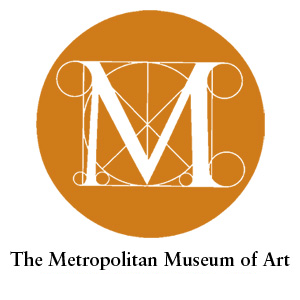
One of the most enjoyable things about the internet is the way that it has completely changed our access to information. Almost any question can be answered relatively easily, and even the more complex questions can likely be answered with a little bit of digging around online (and, of course, the application of some critical thinking skills to ensure you don't wind up in the web of misinformation that also exists parallel to fact). But there's still something nice about having books, for the simple fact that it's more of a curated experience, almost akin to walking through a museum. Instead of self-direction, an expert guides you through a topic, showing examples they've chosen instead of ones you might happen upon yourself. This becomes a bit of a problem in the world of art books, however, since so many of them are large-format hardcover books that can easily let you rack up a huge bill at your local bookstore (or, more likely at Amazon, but regardless - they're expensive).
Enter the Metropolitan Museum of Art, which has decided to release a huge number of its published works online completely free - and that's free as in beer, no hidden fees or anything like that. Under the umbrella of their MetPublications brand, there are now over 400 free ebooks available for download from their website, which you can
browse through here. They politely ask for a donation, but it's completely optional. When you stack that up against paying well over $100 for a single one of their admittedly gorgeous volumes, it's easy to see the appeal.
If that doesn't pique your interest, however, the Met has also decided to digitize and make public over 400,000 high resolution images from their collection - and best of all, they're free to access and free to use, providing you don't try to take credit for them, of course. Give it a look over and see if you find your next inspiration!
Posted on March 27th 2015 on 04:57pm
0 Comments
Wednesday 25th March 2015Photography Through the Ages
.jpg)
It's almost impossible to live a day of life in the 21st century without seeing hundreds of photographs every day. Whether they're covering your favorite website or just the billboards on the way to work, photographs have become a major part of our lives - but they've only become so over the last 50 years. It's hard to imagine a world where the best pictures we could have of our loved ones were expensively painted portraits or even simple sketches, but it's not so far behind us.
The first camera, known as a camera obscura, was in use by many ancient cultures, but these early cameras were only able to project a negative image onto a surface, because photographic film had not yet been invented. For many centuries, they were simple curiosities, but like all good ideas, the camera was bound to have its day.
Cameras have quite a long history beyond being curiosities, though. In fact, some people insist that the famous European painter Vermeer and many other artists in the 17th and 18th centuries made use of a camera obscura to help paint their masterpieces, which were admired for their perfect perspective and incredible attention to detail. This has never been proven, but it is a popular and controversial argument that has many scholarly supporters.
By the time the 19th century rolled around, many people were experimenting with early cameras, but once George Eastman invented celluloid photographic film in the late 1800s, the camera truly took hold in people's imagination. His first camera, 'Kodak', (which the company was eventually named for), was a success, but his next model, the Brownie, was so successful that it was on sale from 1900 all the way to the 1960s, although it had been improved a lot along the way.
The thing that was truly unique about the Brownie was that it was the first camera to really make snapshots possible for the average person. Suddenly everyone had a way to remember their family, friends, and experiences in a way that had never been possible before. No doubt, Eastman would have loved the modern world of digital photography we live in now, where anyone with a camera and an internet connection can send a picture around the globe in less time than it takes to read this post!
Posted on March 25th 2015 on 04:44pm
0 Comments
Friday 20th March 2015Artist Spotlight: Jackson Pollock
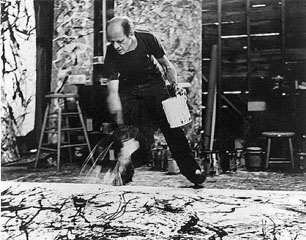
One of the most interesting artists of the last century is the American artist Jackson Pollock. Since we're just entering the Spring season properly, and one of Pollock's most famous periods was named the Springs period, it only seemed appropriate that we stop to take a look at him and his work in this edition of the Artist Spotlight. Even though we normally look at artists who are currently active, and Pollock passed away back in the mid-1950's, his influence on modern art is undeniable.
As a pioneer of the abstract expressionist school, Pollock is incredibly famous for the unique style of his artwork, commonly known as 'drip painting'. If you've ever seen a single Pollock, the reason for the name will be immediately apparent. The entire style is characterized by spatters and droplets, thrown against the canvas with a wild abandon. The Springs period we mentioned earlier was the time in his career when he established himself as an artist to watch, creating some of his most famous works in the converted studio of his home in the neighbourhood of Springs, in East Hampton, Long Island. Interestingly, as he was being lauded for his work in the style, as Life magazine featured him in a four page spread that asked the question, "Is he the greatest living painter in the United States?" he abruptly decided to change his style, and completely distanced himself from the drip painting style he is so famous for.
Unfortunately, like many great artists, he struggled with substance abuse, and his excessive alcoholism has been attributed as the cause of his death, which occurred in 1954 as a result of a single-vehicle automobile accident. His legacy, however, is best summed up in this excerpt from a book on his life and work by Pepe Karmel:
"Pollock’s finest paintings… reveal that his all-over line does not give rise to positive or negative areas: we are not made to feel that one part of the canvas demands to be read as figure, whether abstract or representational, against another part of the canvas read as ground. There is not inside or outside to Pollock’s line or the space through which it moves…. Pollock has managed to free line not only from its function of representing objects in the world, but also from its task of describing or bounding shapes or figures, whether abstract or representational, on the surface of the canvas."
Posted on March 20th 2015 on 10:51pm
0 Comments
Wednesday 18th March 2015Spring Cleaning Inspiration

At long, long last, it's that time again! This winter has been an incredibly punishing one for most of North America, despite warmer than average temperatures in much of the rest of the world, but no matter how your winter went, it's always a relief to see the Sun finally starting to break through the Winter blahs and being a sense of renewal and rebirth to the world. Apologies if you love in the Southern hemisphere, which is of course just sliding into Autumn, but since most of you live in the Northern hemisphere, enjoy!
As we said, Spring is most commonly associated with growth and rebirth, as it has been for thousands of years, and as artists, we are more sensitive than most to the value of themes and symbols. They drive much of our work, even as they shape much of our thoughts, so it only seems natural that the world around us should provide some of those themes as well. Typically, this brings to mind Spring cleaning, when the home is given a once or twice over to get rid of unused items and make way for a new year of life. But when it comes to your artistic practice, many of us are loathe to dig through our work and clean up.
Those of you lucky enough to have a studio space to work in would do well to take the opportunity to clean things out - come on, you know there are some old supplies somewhere in there that you'll never be able to use again! There's something about the creative mind that often tends towards clutter (and several studies linking clutter with creativity, which seems to make perfect sense), but it can still be refreshing to clean out the old clutter, even if it's just to make room for this year's new clutter. Even if all you do is rearrange things and put some things away, changing your space in the smallest ways can still make a huge different in the way you interact with it.
Refreshing rebirth doesn't simply have to apply to your workspace, however. Spring can also be a great time to explore new artistic avenues and new styles, to finish up old projects so that there is room and time to start new ones. Let yourself embrace Spring, and all that it entails, and hopefully your artistic career will be reborn after a long Winter. Happy Spring, and happy creating, everyone!
Posted on March 18th 2015 on 02:04pm
0 Comments
Friday 13th March 2015Genre Spotlight: Surrealism

We're going to be starting a new recurring series here at Gallereo, in a similar vein to our Artist Spotlight series, but taking a broader view and looking at artistic genres as a whole. Our hope is that we'll be able to give a bit of a bigger picture of the movements that lie behind and surround some of the world's most popular artists, and maybe even inspire some of you to experiment with new genres that you otherwise might have ignored! To that end, we start the series today with a quick look at Surrealism, that most whimsical and mystifying of all artistic genres.
First getting started in the 1920s in Europe, Surrealism originally had two opposing parties of artists who squabbled over the usage and priority of the term. These arguments got so heated that at one point, the leaders of the two factions, Andre Breton and Yvan Goll, actually got into a physical fight in the middle of the Champs Elysee in Paris, France. Breton's faction eventually proved the stronger, though history does not seem to relate who won the fistfight.
His unique definition of Surrealism also triumphed, as he describes it:
Dictionary: Surrealism, n. Pure psychic automatism, by which one proposes to express, either verbally, in writing, or by any other manner, the real functioning of thought. Dictation of thought in the absence of all control exercised by reason, outside of all aesthetic and moral preoccupation.
Encyclopedia: Surrealism. Philosophy. Surrealism is based on the belief in the superior reality of certain forms of previously neglected associations, in the omnipotence of dream, in the disinterested play of thought. It tends to ruin once and for all other psychic mechanisms and to substitute itself for them in solving all the principal problems of life.
Some of the most famous Surrealist artists are household names, now viewed with reverence: Salvador Dali, Max Ernst, Man Ray, Rene Magritte and Joan Miro, not to mention Andre Breton himself, are names that every art student has run across, and their popularity is still evident in university campuses around the world, who regularly feature shows, film festivals, and other celebrations of the Surrealist canon. Much of what we regard as postmodern has roots and themes that can be traced back to the Surrealist movement, and that leaves much of today's popular art an evolving legacy of the Surrealists.
Posted on March 13th 2015 on 01:01pm
0 Comments
Wednesday 11th March 2015DNA Artwork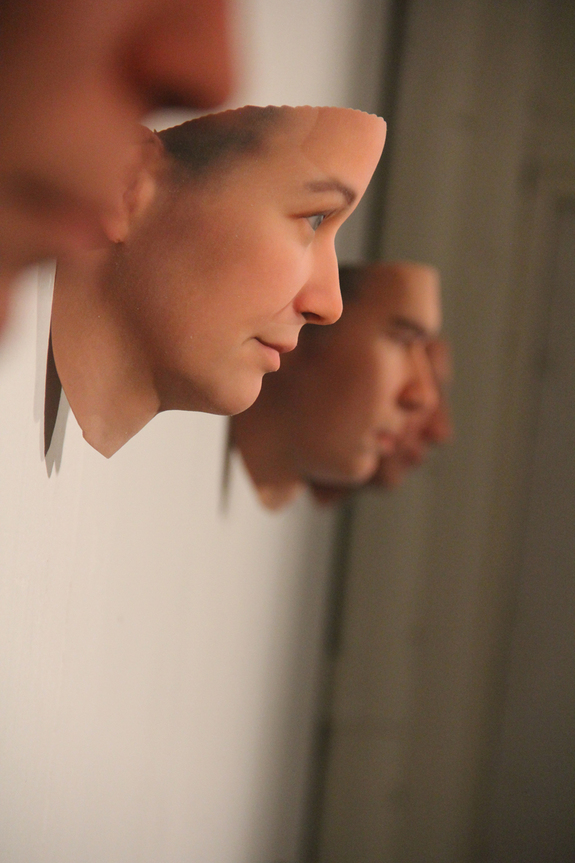
One of the things we own almost intrinsically is our DNA. Actually, there is some speculation about the legal precedents involved in the situation, but regardless, nothing is more definitively "you" than your DNA. It defines every element of your physical makeup - though fortunately, for all of us, our experiences can still shape who we are as people, but to what extent? How much of our life is defined by our DNA? How much of our identities are defined by our DNA? These are the questions that artist Heather Dewey-Hagborg hopes to explore with her new project, "Stranger Visions", currently on display at the Clocktower Gallery in New York City.
The inspiration for the project struck Dewey-Hagborg as she walked the streets of New York. Despite large improvements over the last few decades, New York is still somewhat dirty, the way any big city is, but a large part of this garbage is a product of human usage - and every single time we touch something, we leave some kind of genetic trace material behind. Whether it's chewing gum, a coffee cup, or a stray hair, we leave our most private genetic information almost everywhere in our wake. Dewey-Hagborg decided to see what could be constructed from these remains, and began collected samples all across the city.
"It's meant to highlight questions of genetic privacy, and also point to questions of how technology like this might be used in the future," Dewey-Hagborg said in an interview with science news blog LiveScience. "I hope that when a viewer comes into the gallery, they question their own genetic privacy and think about the things that inspired me to do this in the first place."
Using genetic sequencing and 3D printing, she has created a series of facial reconstructions that adorn the walls of the gallery space. While it's difficult (or perhaps impossible) to recreate facial morphology perfectly from genetic markers, it's still possible to get a general sense of who these people were. The end result is more of a sketch, despite the realistic expressions that are visible on each face, hence the name of the show. After its stint at the Clocktower, the show will be moving to the Genspace gallery in June, and eventually to Long Island and then on to Mexico City.
Posted on March 11th 2015 on 05:32pm
0 Comments
Friday 06th March 2015A New Twist on Art Therapy
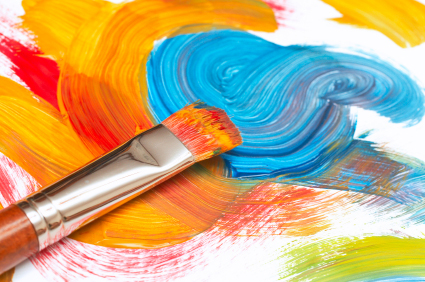
Art therapy is a process whereby medical patients use the practice of art as both a means of self-expression and as a means of distraction during extended periods of recovery. While still a relatively new discipline, the practice has been around since the middle of the 19th century, when British artist Adrian Hill was recovering from a bout of tuberculosis and discovered the powerful impact of art on his state of mind during recovery. He began to encourage the practice of creating art to other patients in the hospital he was staying, and eventually the practice began to catch on. He was eventually joined by Edward Adamson, another British artist and WW2 veteran, who brought the practice into common usage in British mental hospitals.
Typically, in the modern era, these practices are managed by art therapists who have undergone professional training. Nothing nearly as rigorous as medical school, which may be partly to blame for the disdain that medical doctors sometimes exhibit for the practice, but thanks to one pioneering medical school teacher, that entire perspective may change. At the University of British Columbia in Canada, Carol-Ann Courneya has been asking her med students to experiment with art, for the express purpose of making them better doctors.
"Art making can be really instrumental in making students more well rounded and empathetic doctors," says Courneya, who teaches in the Department of Cellular & Physiological Sciences. At first blush, this might seem a bit of an unlikely route for so practical and hard-headed a discipline as medicine, but the pressures of med school have been known to make more than a few students crack and abandon their career trajectory over the years. "Medical students, residents, and even practising physicians are telling us that they're using art to decompress from the stress of medical training," Courneya continues.
Hopefully, this will not only produce a generation of doctors that are both more empathic and well-rounded, as she mentions, but also those who have a much more ecumenical approach to the healing power of art in the medical environment. Many hospitals are already filled with impressive, and in some cases even museum-quality artworks, but the general acceptance of the power of creativity and self-expression may be a bit slower to become acceptable medical practice. Here's hoping that art - and artists - can prove how empirically valuable it can be.
Posted on March 06th 2015 on 04:50pm
0 Comments
Wednesday 04th March 2015Germany's Last Banksy Defaced
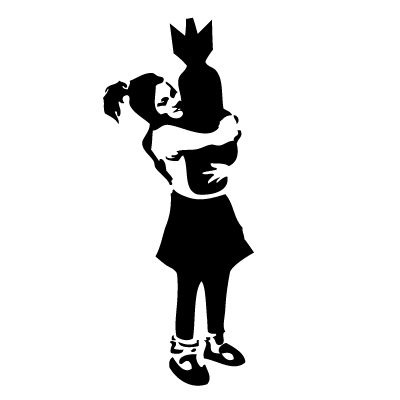
For a long, long time, street art struggled to shake off the public perception that it was nothing more than flagrant vandalism with a coat of paint. With the help of a large and dedicated community, along with more prominent individual artists such as Banksy who have grown into almost household names, street art is finally beginning to be accepted as a legitimate art form, one who may be more true to the emotive and impactful nature of art that much of what is being produced in more traditional art spheres.
Sometimes, however, it's impossible to shake off the reality that vandalism, graffiti and street art all share a common root and may suffer the same ills. This was never more true than last month, when the last surviving piece of street art by Banksy in Germany was defaced by a vandal. The piece, a stencil entitled 'Bomb Hugger', found on a concrete pillar in Hamburg, had actually been protected by a local arts group, the Spiegelberger Foundation, in 2011 to prevent just this sort of casual destruction. A piece of clear plexiglass was riveted around the edges of the work, preventing most of the potential damages, but the clever vandal figured out a way around this - using spray paint. The word 'graffiti' was spray painted thickly just above the upper edge of the plexiglass, so thickly that paint dripped down from the letters and seeped in behind the cover to drip down over the stencil itself
While there is a certain frustrating yet undeniable irony that the vandal spray painted the word 'graffiti', some small voice in the back of the mind wonders if this might not be a stunt by Banksy himself in response to the sudden fame that has found him. Alternatively, now that Banksy pieces are becoming quite valuable to collectors, it's possible that someone is attempted to drive up the value of their own pieces by destroying others that are outside of the traditional protections afforded to most artwork by galleries and their accompanying security staff.
It's hard to tell if it's casual insensitivity, a calculated plot, or who knows what, but inexplicable the Hamburg police department insists that the piece was undamaged by the vandalism, although it appears now that the majority of the blue spraypaint has been removed and the piece has been restored as much as possible.
Posted on March 04th 2015 on 05:00pm
0 Comments
 One of the most enjoyable things about the internet is the way that it has completely changed our access to information. Almost any question can be answered relatively easily, and even the more complex questions can likely be answered with a little bit of digging around online (and, of course, the application of some critical thinking skills to ensure you don't wind up in the web of misinformation that also exists parallel to fact). But there's still something nice about having books, for the simple fact that it's more of a curated experience, almost akin to walking through a museum. Instead of self-direction, an expert guides you through a topic, showing examples they've chosen instead of ones you might happen upon yourself. This becomes a bit of a problem in the world of art books, however, since so many of them are large-format hardcover books that can easily let you rack up a huge bill at your local bookstore (or, more likely at Amazon, but regardless - they're expensive).
One of the most enjoyable things about the internet is the way that it has completely changed our access to information. Almost any question can be answered relatively easily, and even the more complex questions can likely be answered with a little bit of digging around online (and, of course, the application of some critical thinking skills to ensure you don't wind up in the web of misinformation that also exists parallel to fact). But there's still something nice about having books, for the simple fact that it's more of a curated experience, almost akin to walking through a museum. Instead of self-direction, an expert guides you through a topic, showing examples they've chosen instead of ones you might happen upon yourself. This becomes a bit of a problem in the world of art books, however, since so many of them are large-format hardcover books that can easily let you rack up a huge bill at your local bookstore (or, more likely at Amazon, but regardless - they're expensive)..jpg) It's almost impossible to live a day of life in the 21st century without seeing hundreds of photographs every day. Whether they're covering your favorite website or just the billboards on the way to work, photographs have become a major part of our lives - but they've only become so over the last 50 years. It's hard to imagine a world where the best pictures we could have of our loved ones were expensively painted portraits or even simple sketches, but it's not so far behind us.
It's almost impossible to live a day of life in the 21st century without seeing hundreds of photographs every day. Whether they're covering your favorite website or just the billboards on the way to work, photographs have become a major part of our lives - but they've only become so over the last 50 years. It's hard to imagine a world where the best pictures we could have of our loved ones were expensively painted portraits or even simple sketches, but it's not so far behind us.  One of the most interesting artists of the last century is the American artist Jackson Pollock. Since we're just entering the Spring season properly, and one of Pollock's most famous periods was named the Springs period, it only seemed appropriate that we stop to take a look at him and his work in this edition of the Artist Spotlight. Even though we normally look at artists who are currently active, and Pollock passed away back in the mid-1950's, his influence on modern art is undeniable.
One of the most interesting artists of the last century is the American artist Jackson Pollock. Since we're just entering the Spring season properly, and one of Pollock's most famous periods was named the Springs period, it only seemed appropriate that we stop to take a look at him and his work in this edition of the Artist Spotlight. Even though we normally look at artists who are currently active, and Pollock passed away back in the mid-1950's, his influence on modern art is undeniable. At long, long last, it's that time again! This winter has been an incredibly punishing one for most of North America, despite warmer than average temperatures in much of the rest of the world, but no matter how your winter went, it's always a relief to see the Sun finally starting to break through the Winter blahs and being a sense of renewal and rebirth to the world. Apologies if you love in the Southern hemisphere, which is of course just sliding into Autumn, but since most of you live in the Northern hemisphere, enjoy!
At long, long last, it's that time again! This winter has been an incredibly punishing one for most of North America, despite warmer than average temperatures in much of the rest of the world, but no matter how your winter went, it's always a relief to see the Sun finally starting to break through the Winter blahs and being a sense of renewal and rebirth to the world. Apologies if you love in the Southern hemisphere, which is of course just sliding into Autumn, but since most of you live in the Northern hemisphere, enjoy! We're going to be starting a new recurring series here at Gallereo, in a similar vein to our Artist Spotlight series, but taking a broader view and looking at artistic genres as a whole. Our hope is that we'll be able to give a bit of a bigger picture of the movements that lie behind and surround some of the world's most popular artists, and maybe even inspire some of you to experiment with new genres that you otherwise might have ignored! To that end, we start the series today with a quick look at Surrealism, that most whimsical and mystifying of all artistic genres.
We're going to be starting a new recurring series here at Gallereo, in a similar vein to our Artist Spotlight series, but taking a broader view and looking at artistic genres as a whole. Our hope is that we'll be able to give a bit of a bigger picture of the movements that lie behind and surround some of the world's most popular artists, and maybe even inspire some of you to experiment with new genres that you otherwise might have ignored! To that end, we start the series today with a quick look at Surrealism, that most whimsical and mystifying of all artistic genres. One of the things we own almost intrinsically is our DNA. Actually, there is some speculation about the legal precedents involved in the situation, but regardless, nothing is more definitively "you" than your DNA. It defines every element of your physical makeup - though fortunately, for all of us, our experiences can still shape who we are as people, but to what extent? How much of our life is defined by our DNA? How much of our identities are defined by our DNA? These are the questions that artist Heather Dewey-Hagborg hopes to explore with her new project, "Stranger Visions", currently on display at the Clocktower Gallery in New York City.
One of the things we own almost intrinsically is our DNA. Actually, there is some speculation about the legal precedents involved in the situation, but regardless, nothing is more definitively "you" than your DNA. It defines every element of your physical makeup - though fortunately, for all of us, our experiences can still shape who we are as people, but to what extent? How much of our life is defined by our DNA? How much of our identities are defined by our DNA? These are the questions that artist Heather Dewey-Hagborg hopes to explore with her new project, "Stranger Visions", currently on display at the Clocktower Gallery in New York City. Art therapy is a process whereby medical patients use the practice of art as both a means of self-expression and as a means of distraction during extended periods of recovery. While still a relatively new discipline, the practice has been around since the middle of the 19th century, when British artist Adrian Hill was recovering from a bout of tuberculosis and discovered the powerful impact of art on his state of mind during recovery. He began to encourage the practice of creating art to other patients in the hospital he was staying, and eventually the practice began to catch on. He was eventually joined by Edward Adamson, another British artist and WW2 veteran, who brought the practice into common usage in British mental hospitals.
Art therapy is a process whereby medical patients use the practice of art as both a means of self-expression and as a means of distraction during extended periods of recovery. While still a relatively new discipline, the practice has been around since the middle of the 19th century, when British artist Adrian Hill was recovering from a bout of tuberculosis and discovered the powerful impact of art on his state of mind during recovery. He began to encourage the practice of creating art to other patients in the hospital he was staying, and eventually the practice began to catch on. He was eventually joined by Edward Adamson, another British artist and WW2 veteran, who brought the practice into common usage in British mental hospitals. For a long, long time, street art struggled to shake off the public perception that it was nothing more than flagrant vandalism with a coat of paint. With the help of a large and dedicated community, along with more prominent individual artists such as Banksy who have grown into almost household names, street art is finally beginning to be accepted as a legitimate art form, one who may be more true to the emotive and impactful nature of art that much of what is being produced in more traditional art spheres.
For a long, long time, street art struggled to shake off the public perception that it was nothing more than flagrant vandalism with a coat of paint. With the help of a large and dedicated community, along with more prominent individual artists such as Banksy who have grown into almost household names, street art is finally beginning to be accepted as a legitimate art form, one who may be more true to the emotive and impactful nature of art that much of what is being produced in more traditional art spheres.



